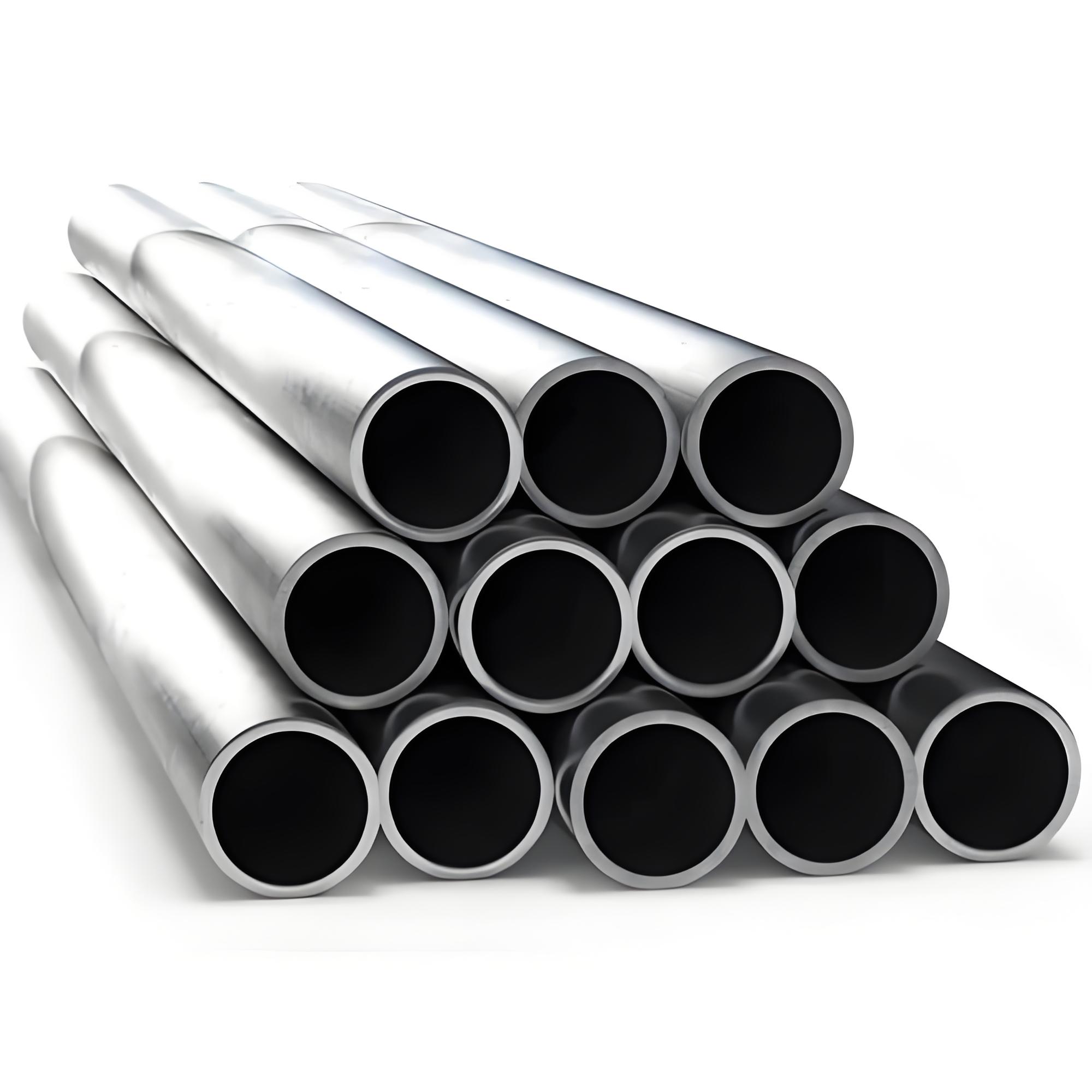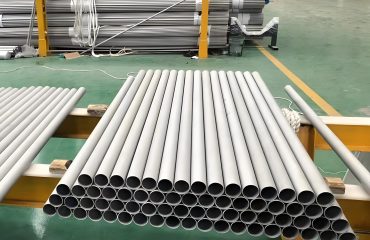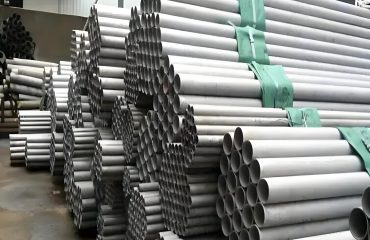
HASTELLOY® X Alloy Welded Steel Pipe | ASTM B619, ASTM B775, ASME SB619, ASME SB775
Overview of HASTELLOY® X Alloy Welded Pipe
HASTELLOY® X alloy (UNS N06002, W86002) is a nickel-chromium-iron-molybdenum superalloy designed for exceptional performance in high-temperature and corrosive environments. Renowned for its oxidation resistance, high-temperature strength, and fabricability, HASTELLOY® X is widely used in welded pipes for applications in aerospace, chemical processing, petrochemical, and industrial furnace industries. Compliant with ASTM B619, ASTM B775, ASME SB619, and ASME SB775 standards, these welded pipes offer superior resistance to stress-corrosion cracking, thermal fatigue, and oxidation up to 2200°F (1200°C). The alloy retains excellent ductility after prolonged exposure to temperatures of 1200°F (650°C), 1400°F (760°C), and 1600°F (870°C) for up to 16,000 hours, ensuring durability in demanding conditions.
Key features include:
-
- High-Temperature Performance: Maintains structural integrity in extreme heat, ideal for gas turbines and furnaces.
- Corrosion Resistance: Resists oxidation, chloride-induced stress corrosion cracking, carburization, and nitriding.
- Weldability: Excellent welding characteristics, supporting various techniques without significant carbide precipitation.
- Standards Compliance: Meets ASTM and ASME specifications for welded pipe quality and performance.
HASTELLOY® X welded pipes are valued for their versatility, reliability, and cost-effectiveness compared to seamless pipes, making them suitable for large-diameter piping systems in critical applications.
Specifications of HASTELLOY® X Welded Pipe
HASTELLOY® X welded pipes are manufactured to stringent industry standards, ensuring consistent quality and performance. The following table outlines key specifications as per ASTM B619, ASTM B775, ASME SB619, and ASME SB775.
| Parameter | Details |
|---|---|
| Alloy Designation | HASTELLOY® X (UNS N06002, W86002) |
| Standards | ASTM B619 (Welded Pipe), ASTM B775 (General Requirements), ASME SB619, ASME SB775 |
| Pipe Type | Welded, Electric Resistance Welded (ERW), Electric Fusion Welded (EFW) |
| Size Range | Outer Diameter (OD): 1/2″ to 48″ (12.7 mm to 1219 mm) Wall Thickness: SCH 5S, 10S, 40S, 80S, XS, XXS Length: Up to 12 meters (custom lengths available) |
| Surface Finish | Annealed, Pickled, Polished, Descaled |
| Classes (ASTM B619) | Class 1: Welded, solution-annealed Class 2: Welded, cold-worked, solution-annealed |
| Testing | Hydrostatic, Eddy Current, Flattening, Tensile, Hardness, Radiography (per ASTM B775) |
| Certifications | ISO 9001, EN 10204 3.1/3.2, ASTM/ASME Compliance, NACE MR0175 (if requested) |
| Heat Treatment | Solution Annealed at 2150°F (1177°C), Rapid Cooled |
Standards Explanation:
-
- ASTM B619/ASME SB619: Covers welded nickel and nickel-cobalt alloy pipes for corrosion-resistant and high-temperature service, with two classes (Class 1: welded and solution-annealed; Class 2: welded, cold-worked, and solution-annealed).
-
- ASTM B775/ASME SB775: Specifies general requirements for nickel alloy welded pipes, including tolerances, testing, descaling, and marking.
Descaling, as required by ASTM B619, removes surface impurities, enhances corrosion resistance, and improves flow characteristics, making these pipes suitable for chemical processing and furnace applications.
[](https://www.duplexpipes.com/astm-b619-welded-pipe.html)Applications of HASTELLOY® X Welded Pipe
HASTELLOY® X welded pipes are critical in industries requiring robust performance under high temperatures and corrosive conditions. The following table highlights key applications.
| Industry | Applications |
|---|---|
| Aerospace | Afterburner piping, tailpipe systems, cabin heater piping |
| Chemical Processing | Piping systems, catalyst support grids, furnace baffles, flash drier components |
| Petrochemical | Refinery piping, flare stacks, sulfur recovery units |
| Power Generation | Flue gas desulfurization systems, boiler piping |
| Industrial Furnaces | Furnace piping, muffles, retorts, radiant tubes |
Detailed Applications:
-
- Aerospace: HASTELLOY® X welded pipes are used in afterburner piping and tailpipe systems, where they endure extreme temperatures and oxidation. Cabin heater piping benefits from the alloy’s thermal stability.
- Chemical Processing: Welded pipes in piping systems handle corrosive chemicals, while catalyst support grids and furnace baffles resist high-temperature degradation. Flash drier components leverage the alloy’s durability.
- Petrochemical: Refinery piping and flare stacks resist corrosive gases like H2S, with welded pipes offering cost-effective solutions for large-diameter systems.
- Power Generation: Flue gas desulfurization systems use welded pipes to withstand corrosive flue gases, while boiler piping benefits from high-temperature strength.
- Industrial Furnaces: Furnace piping and radiant tubes operate in oxidizing, reducing, and neutral atmospheres, with proven performance after 8,700 hours at 2150°F (1177°C).
The alloy’s resistance to oxidation, carburization, and nitriding makes it ideal for furnace applications, while its weldability supports large-scale piping systems in chemical and energy sectors.
[](https://www.siddhagirimetal.com/astm-b619-uns-n10276-welded-pipe.html)Chemical Composition of HASTELLOY® X Alloy
The chemical composition of HASTELLOY® X is optimized for high-temperature strength and corrosion resistance. The following table details the composition.
| Element | Weight % |
|---|---|
| Nickel (Ni) | Balance (47–52%) |
| Chromium (Cr) | 20.5–23.0 |
| Iron (Fe) | 17.0–20.0 |
| Molybdenum (Mo) | 8.0–10.0 |
| Cobalt (Co) | 0.5–2.5 |
| Tungsten (W) | 0.2–1.0 |
| Manganese (Mn) | 1.0 max |
| Silicon (Si) | 1.0 max |
| Carbon (C) | 0.05–0.15 |
| Phosphorus (P) | 0.04 max |
| Sulfur (S) | 0.03 max |
| Aluminum (Al) | 0.5 max |
| Titanium (Ti) | 0.15 max |
| Boron (B) | 0.008 max |
Role of Key Elements:
- Nickel: Provides corrosion resistance and high-temperature stability.
- Chromium: Forms a protective oxide layer for oxidation resistance.
- Molybdenum: Enhances pitting and crevice corrosion resistance.
- Iron: Balances strength and cost.
- Cobalt and Tungsten: Improve high-temperature strength and creep resistance.
The controlled carbon content minimizes carbide precipitation during welding, ensuring corrosion resistance in the weld zone.
[](https://www.nickelalloysonline.co.in/astm-b619-welded-pipe.html)Physical Properties of HASTELLOY® X Alloy
The physical properties of HASTELLOY® X support its use in welded pipe applications. The following table summarizes key properties.
| Property | Value |
|---|---|
| Density | 8.22 g/cm³ (0.297 lb/in³) |
| Melting Range | 2300–2470°F (1260–1355°C) |
| Thermal Conductivity | 11.6 W/m·K at 100°C (8.0 BTU/ft·h·°F) |
| Specific Heat Capacity | 486 J/kg·K at 20°C (0.116 BTU/lb·°F) |
| Electrical Resistivity | 1.18 µΩ·m at 20°C |
| Coefficient of Thermal Expansion | 13.3 µm/m·°C at 20–1000°C (7.4 µin/in·°F) |
| Modulus of Elasticity | 205 GPa (29.7 × 10⁶ psi) at 20°C |
The moderate thermal expansion and high melting range ensure dimensional stability and performance in high-temperature piping systems.
Mechanical Properties of HASTELLOY® X Alloy
The mechanical properties of HASTELLOY® X ensure reliability in welded pipes under high stress and temperature. The following table summarizes key properties in the annealed condition.
| Property | Value |
|---|---|
| Tensile Strength (Ultimate) | 725 MPa (105 ksi) min |
| Yield Strength (0.2% Offset) | 310 MPa (45 ksi) min |
| Elongation | 35% min |
| Hardness | 241 HB max (Brinell) |
| Creep Strength | 48 MPa at 1500°F (816°C) for 10,000 hours |
| Fatigue Strength | ~300 MPa at 10⁷ cycles (room temperature) |
Temperature-Dependent Properties (Approximate):
| Temperature | Tensile Strength | Yield Strength | Elongation |
|---|---|---|---|
| 20°C (68°F) | 755 MPa (110 ksi) | 345 MPa (50 ksi) | 40% |
| 1000°C (1832°F) | 290 MPa (42 ksi) | 165 MPa (24 ksi) | 50% |
These properties ensure welded pipes withstand high-pressure, cyclic loading, and thermal stress in extreme environments.
Fabrication of HASTELLOY® X Welded Pipe
HASTELLOY® X welded pipes are manufactured using electric resistance welding (ERW) or electric fusion welding (EFW), with excellent weldability due to the alloy’s low carbon content, which minimizes carbide precipitation. The alloy can be hot-worked at 2150°F (1177°C) for forming, ensuring uniform properties, and cold-worked for dimensional precision in Class 2 pipes.
[](https://www.nickelalloysonline.co.in/astm-b619-welded-pipe.html)Welding Techniques for joining or repairs include:
- Gas Tungsten Arc Welding (GTAW/TIG): High-precision welds for critical applications.
- Gas Metal Arc Welding (GMAW/MIG): Suitable for high-speed production.
- Shielded Metal Arc Welding (SMAW): Flexible for field applications.
- Resistance Welding: Used for specialized joints.
Use matching filler metals (e.g., HASTELLOY® X or INCONEL® 617) and maintain clean surfaces to prevent contamination. Submerged arc welding should be avoided to minimize hot cracking. Post-weld solution annealing at 2150°F (1177°C) and rapid cooling restore corrosion resistance and mechanical properties.
[](https://www.nickelalloysonline.co.in/hastelloy-pipe.html)Descaling, a three-step process (cleaning, stripping, pickling), removes surface impurities, enhances corrosion resistance, and improves flow characteristics, as required by ASTM B619.
[](https://www.nickelalloysonline.co.in/astm-b619-welded-pipe.html)Heat Treatment
HASTELLOY® X welded pipes are supplied in the solution heat-treated condition, annealed at 2150°F (1177°C) and rapidly cooled to enhance corrosion resistance and ductility. For Class 1 pipes, welding is followed by solution annealing; Class 2 pipes include cold-working before annealing. Bright annealed pipes are cooled in a hydrogen atmosphere to maintain surface quality. Annealing below 2150°F may cause secondary phase precipitation, reducing strength and ductility.
[](https://www.nickelalloysonline.co.in/astm-b619-welded-pipe.html)HASTELLOY® X Welded Pipe FAQs
1. What makes HASTELLOY® X welded pipes suitable for high-temperature applications?
The alloy’s high nickel, chromium, and molybdenum content ensures oxidation resistance and strength up to 2200°F (1200°C), ideal for furnaces and aerospace piping.
2. How do ASTM B619 and ASTM B775 standards apply to welded pipes?
ASTM B619 specifies welded pipe requirements, including Class 1 and Class 2 processing, while ASTM B775 outlines general requirements like testing and descaling.
[](https://www.aesteironsteelpipes.com/astm-b775-asme-sb775-nickel-and-nickel-alloy-seamless-and-welded-pipe-244.html)[](https://www.nickelalloysonline.co.in/astm-b619-welded-pipe.html)3. What are the advantages of welded vs. seamless HASTELLOY® X pipes?
Welded pipes are cost-effective for large-diameter systems, offering similar corrosion resistance and strength when properly annealed, though seamless pipes provide higher precision for smaller sizes.
4. Can HASTELLOY® X welded pipes be used in chemical processing?
Yes, their resistance to stress-corrosion cracking and corrosive chemicals makes them ideal for piping systems, catalyst grids, and furnace baffles.
[](https://www.nickelalloysonline.co.in/hastelloy-pipe.html)5. How is descaling beneficial for HASTELLOY® X welded pipes?
Descaling removes surface impurities, enhances corrosion resistance, eliminates heat tint, and improves media flow, as required by ASTM B619.
[](https://www.duplexpipes.com/astm-b619-welded-pipe.html)[](https://www.nickelalloysonline.co.in/astm-b619-welded-pipe.html)6. What testing is performed on HASTELLOY® X welded pipes?
Hydrostatic, eddy current, flattening, tensile, hardness, and radiography tests ensure compliance with ASTM/ASME standards, with certifications like EN 10204 3.1.
[](https://www.ganpatind.com/astm-b619-welded-pipe-supplier-exporter/)Conclusion
HASTELLOY® X alloy welded pipes, compliant with ASTM B619, ASTM B775, ASME SB619, and ASME SB775, are engineered for superior performance in high-temperature and corrosive environments. Their exceptional oxidation resistance, high-temperature strength, and weldability make them ideal for aerospace, chemical processing, petrochemical, and furnace applications. Rigorous standards, robust mechanical properties, and advanced fabrication techniques ensure reliability and cost-effectiveness.




You must be logged in to post a comment.